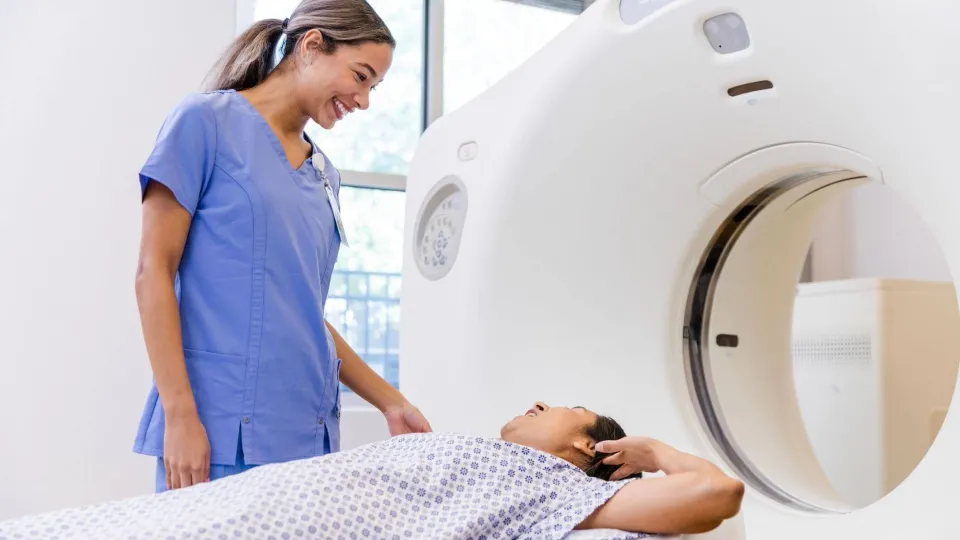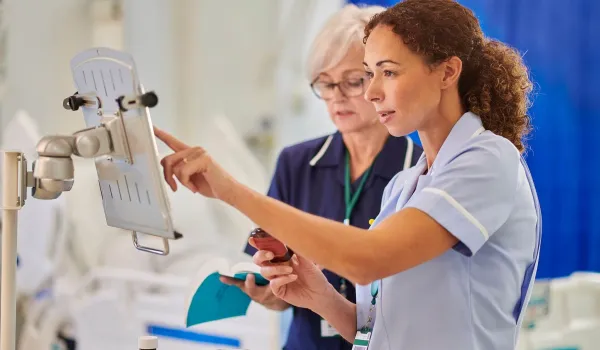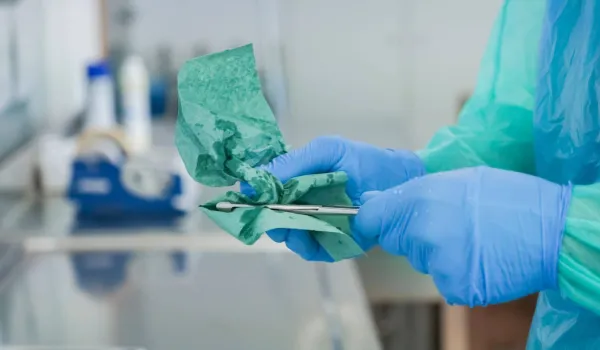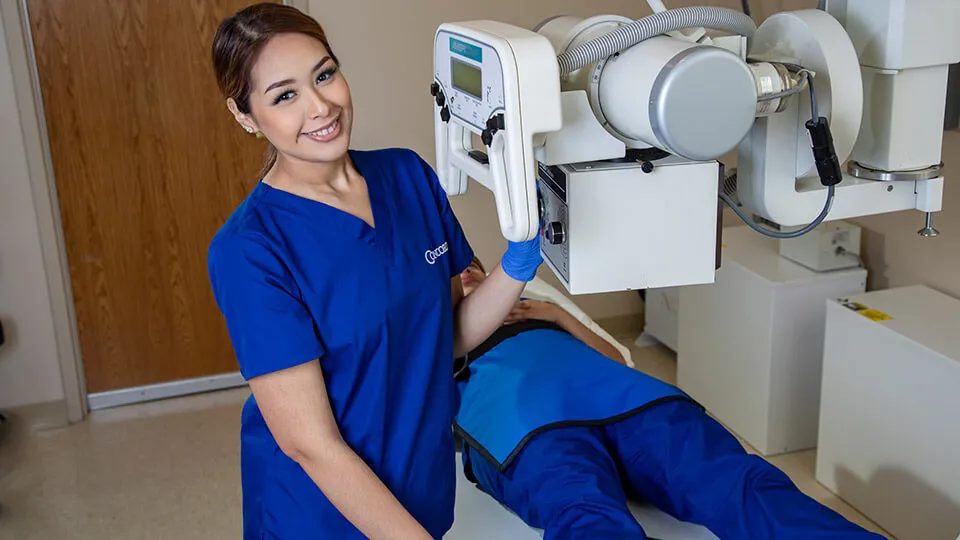
Interested In How To Prepare To Become a Radiology Tech?
Click here to explore Radiology Tech Programs near you!
X-ray equipment makes it possible to identify numerous medical issues without invasive measures. Radiologic technologists work with this powerful tool to help doctors evaluate and diagnose patient conditions. This area of medicine combines the latest technology with compassionate healthcare as technologists guide patients through the imaging process and strive to make these diagnostic tests as comfortable as possible. In this article, aspiring healthcare professionals can find information on how to become a registered radiologic technologist.
What Does a Radiologic Technologist Do?
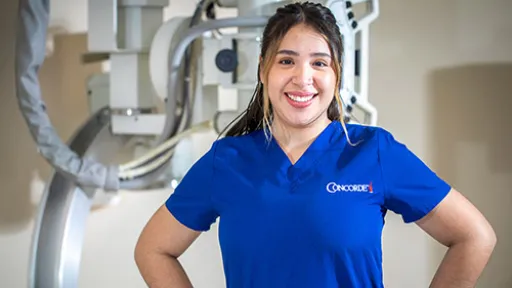
Radiologic technologists, also known as radiology techs or radiographers, operate several pieces of medical imaging equipment to conduct tests including:
- X-rays: X-rays use ionizing radiation to conduct radiographic imaging. This produces images of bones, organs, and other tissues.
- Computed tomography scans: CT machines produce cross-sectional images of the patient's anatomy by capturing a series of successive images that stack together to create a 3D representation.
- Magnetic resonance imaging scans: MRI machines use magnetic fields and radio waves to create images of organs, tissues, or the brain. MRIs are often used to diagnose and stage tumors, evaluate joint injuries, or examine spinal cord abnormalities.
- Mammography: Mammography is a type of X-ray testing that looks for abnormalities in the breasts.
- Ultrasound: Sonography, or ultrasound, produces imagery using sound waves. This test is commonly used to view the uterus and fetus during pregnancy, but ultrasound is also used to evaluate blood flow, examine the breasts, check the thyroid gland, evaluate joint inflammation, and more.
- Nuclear medicine imaging: Nuclear medicine imaging evaluates the way organs function rather than how they look. For this test, the patient is given a radioactive tracer either orally or via injection. A series of images are taken at a constant rate with a gamma camera.
- Fluoroscopy: This imaging test uses a series of X-rays to capture the real-time motion of tissues and organs.
- Bone densitometry: Bone densitometry is performed with an X-ray, specialized CT scan, or dual-energy X-ray absorptiometry. This imaging detects bone density to diagnose osteoporosis and osteopenia and identify areas with a high fracture risk.
The radiologic technologist is responsible for adjusting test parameters such as voltage, exposure time, and positioning for these procedures. The technologist typically works with a Picture Archiving and Communication System workstation, which includes the imaging equipment, viewing device, secure network connection, and printer. They may operate many other pieces of equipment, including biplane fluoroscopes, light boxes, alternators, and film digitizers.
The radiologic technologist's job duties span the entire process of capturing patient imagery, including:
- Explaining the procedure to patients.
- Taking the patient's medical history.
- Positioning patients for the scan and shielding exposed areas not being scanned.
- Reviewing and following the physician's instructions for the scan.
- Adjusting imaging equipment as needed.
- Obtaining quality images.
- Following proper radiation safety measures.
- Maintaining accurate and detailed patient records.
- Interpreting images alongside the radiologist.
Related: Common Myths About Radiologic Technology Busted
How Can I Prepare to Become a Radiologic Technologist?
Completing an associate degree program is the most common way to meet radiologic technologist educational requirements. Some states require students to graduate from a program with accreditation from the Joint Review Committee on Education in Radiologic Technology (JCERT). Most radiologic technology associate programs take two years, but you can complete the JCERT-accredited Radiologic Technologist Associate Degree Program at Concorde Career College in as little as 20 months.
The Radiologic Technologist Associate Degree Program is designed to prepare students for entry-level radiologic technician positions in various healthcare settings. The education for a radiologic technician covers topics such as:
- Anatomy.
- Physiology.
- Medical terminology.
- CPR.
- Checking vital signs.
- Positioning the patient's body.
- Operating radiologic equipment.
- Radiation protection.
- Image evaluation.
To excel in a radiologic technology program, you should have an interest in and aptitude for math, science, and healthcare. If you got good grades or standardized test scores in these areas previously, you're a good candidate for this type of job. To be admitted to a radiologic technology program like Concorde's, you must have:
- A high school diploma or equivalent qualification such as a GED.
- The ability to read, write, and speak English fluently.
- A U.S. Social Security number as a citizen, eligible noncitizen, or permanent resident.
- An acceptable criminal background check.
Interested applicants should consult with an admissions representative for detailed information, as additional entrance requirements may apply.
Interested In How To Prepare To Become a Radiology Tech?
Click here to explore Radiology Tech Programs near you!
Certification and Licensure
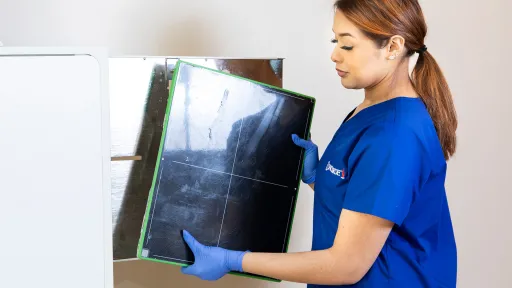
Most states mandate certification or licensure as one of their radiologic technologist qualifications. The American Registry of Radiologic Technologists offers radiologic technologist certification. Upon successful completion of a training program, graduates are eligible to sit for the ARRT exam. Passing this exam is typically required for employment as a radiologic technologist in most states.
To become certified, you must get a passing score on the 4-hour ARRT examination, which includes 200 questions. To maintain certification, you must complete at least 24 approved continuing education hours every two years. Those with a sonography credential must apply at least 16 CE hours to sonography-related activities.
Related: Where to Work as a Radiology Tech
Career Outlook
The Bureau of Labor Statistics projects that employment for radiologic and MRI technologists will increase by 6% between 2023 and 2033, which is faster than the 4% increase anticipated for all occupations in the United States. Many radiologic technologist jobs are opening up as current professionals retire or pursue career advancement.
The demand for radiologic technology is projected to increase in the coming years due to the aging baby boomer generation and the increase in chronic diseases. It's estimated that 129 million people in the U.S. have at least one major chronic disease, and prevalence is projected to increase steadily in the coming years.
Advancement Opportunities
You can increase your employability and opportunities as a radiologic technologist by pursuing additional credentials from AART. Radiology is a vast and varied career field, and many professionals prefer to focus on a particular type of imaging technology, such as X-rays, CTs, or sonography.
Earning credentials in radiography, nuclear medicine technology, radiation therapy, or sonography will unlock additional credentialing opportunities. Once you've earned the sonography credential, for example, you're eligible to pursue credentialing in vascular sonography, breast sonography, or magnetic resonance imaging.
You can pursue further education in a particular specialization if you'd like to dive deeper into a particular area of diagnostics. Concorde offers programs in Cardiovascular Sonography, Diagnostic Medical Sonography, Polysomnographic Technology, and Neurodiagnostic Technology.
Skills and Qualities for Success
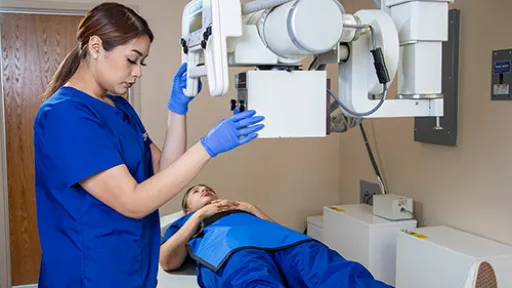
Radiologic technologists need a diverse skill set to excel in this career. The best radiologic technologists are intrigued by technology yet passionate about people. If you're considering this career, your skills and personal qualities should include:
- Attention to detail: The imaging tests performed by a radiologic technician are often looking for small abnormalities, and these professionals need a keen eye to determine what they're after. A radiologic technician must always read instructions carefully, follow them to the letter, and review their work to determine whether the results are optimal.
- Technology skills: You should have a natural aptitude for technology in this career. You'll be working with complex machines and programs every day, and need to feel comfortable maintaining, operating, and troubleshooting them.
- Interpersonal skills: This job requires one-on-one interaction with patients and their families. Radiologic technicians must know how to show support and empathy for patients who may feel uncomfortable, nervous, or worried about the test and their diagnosis.
- Strength and stamina: As a radiologic technician, you may work long hours, move heavy equipment, and help move or position patients. You need to do a lot of standing and walking throughout the day.
- Mathematical and scientific skills: You must know how to calculate radiation and magnetic resonance while performing imaging procedures and make the appropriate adjustments to get the optimal image without exposing the patient to undue risks.
- Medical skills: Radiologic technologists must learn anatomy and physiology. They're responsible for properly taking vitals and positioning patients to get a precise image of specific organs, tissues, bones, blood vessels, or other parts of the body.
- Communication: You must be able to communicate effectively at many different levels as a radiologic technologist. You need to speak in simple terms to patients which may include children or the elderly. You also need to communicate at an advanced level with diagnosing physicians and radiologists who read your work.
Related: Important Traits for Radiology Techs
In Conclusion
Radiologic technology is a rewarding career field that provides plenty of patient contact and opportunities to make an impact. You can get started on this career path with a program such as the Radiologic Technology Associate Degree Program at select Concorde campuses, which is accredited by JCERT. Contact us to learn more today and begin working toward your career goals.
“Radiologic and MRI Technologists.” U.S. Bureau of Labor Statistics. https://www.bls.gov/ooh/healthcare/radiologic-technologists.htm#tab-6
“Chronic Disease Prevalence in the Sociodemographic and Geographic Variations by Zip Code Tabulation Area.” CDC. https://www.cdc.gov/pcd/issues/2024/23_0267.htm
“Radiologic and MRI Technologists.” U.S. Bureau of Labor Statistics. https://www.bls.gov/ooh/healthcare/radiologic-technologists.htm#tab-5
Take The Next Step Towards a Brighter Future
Interested in learning more about our Radiologic Technology program?
We have a Concorde representative ready to talk about what matters most to you. Get answers about start dates, curriculum, financial aid, scholarships and more!



